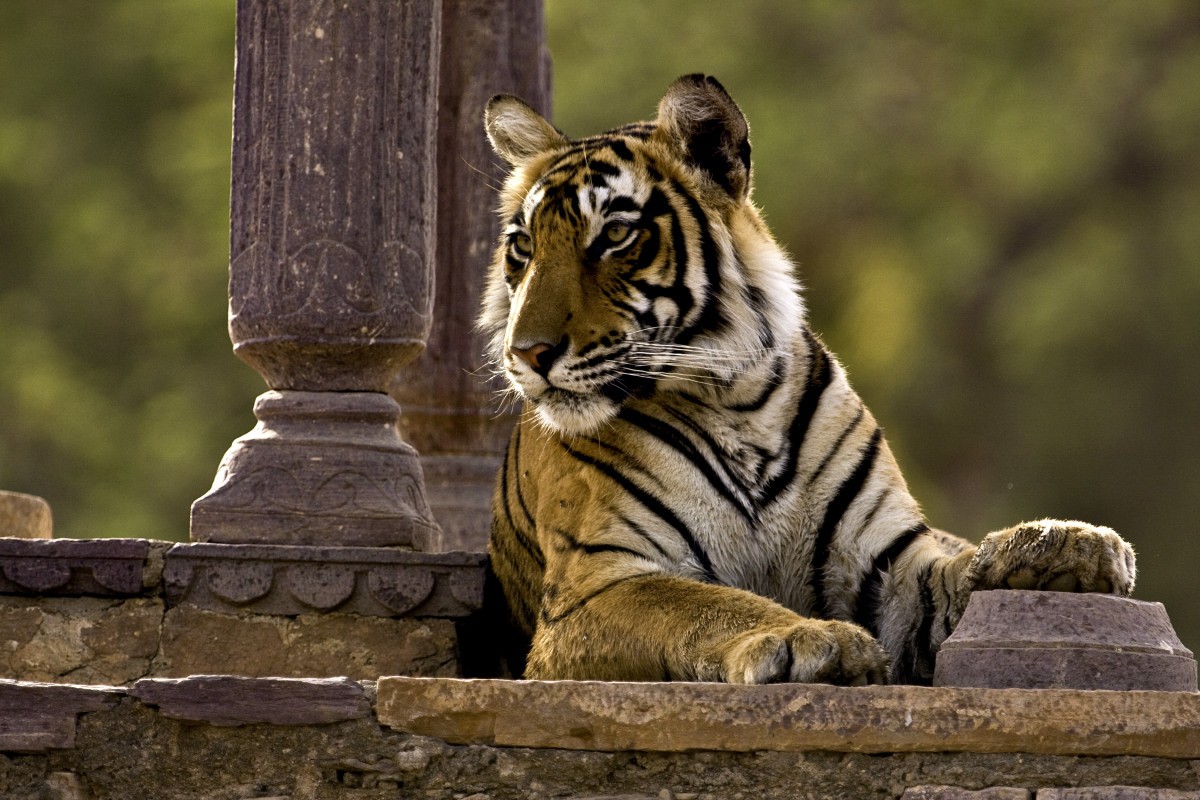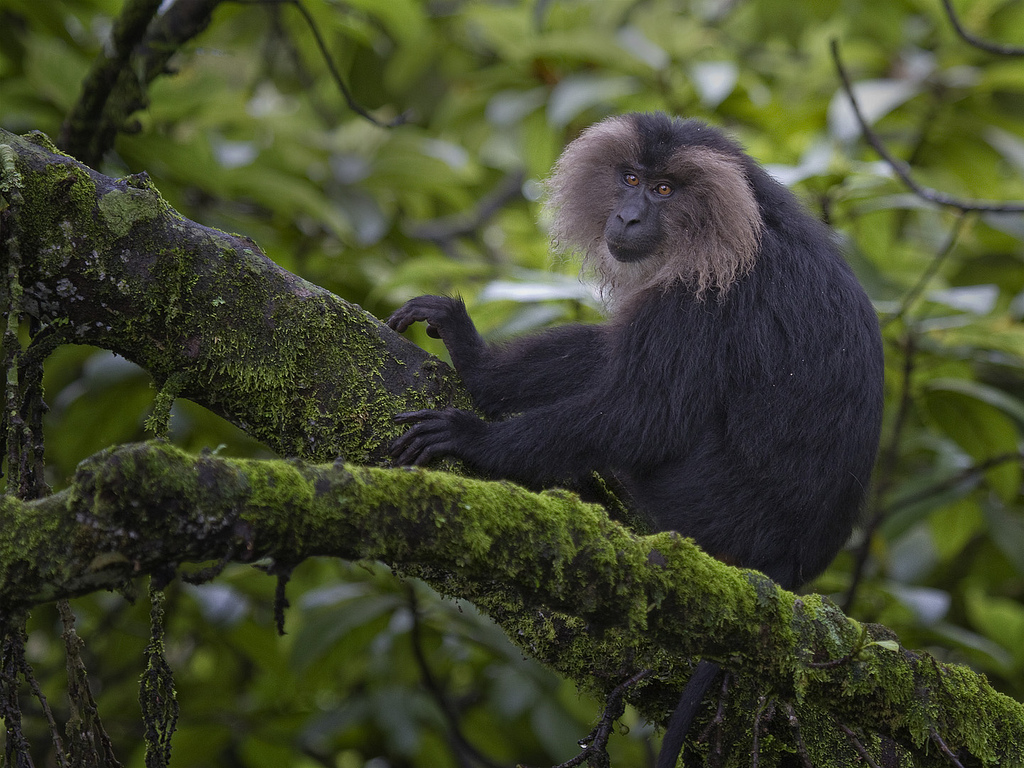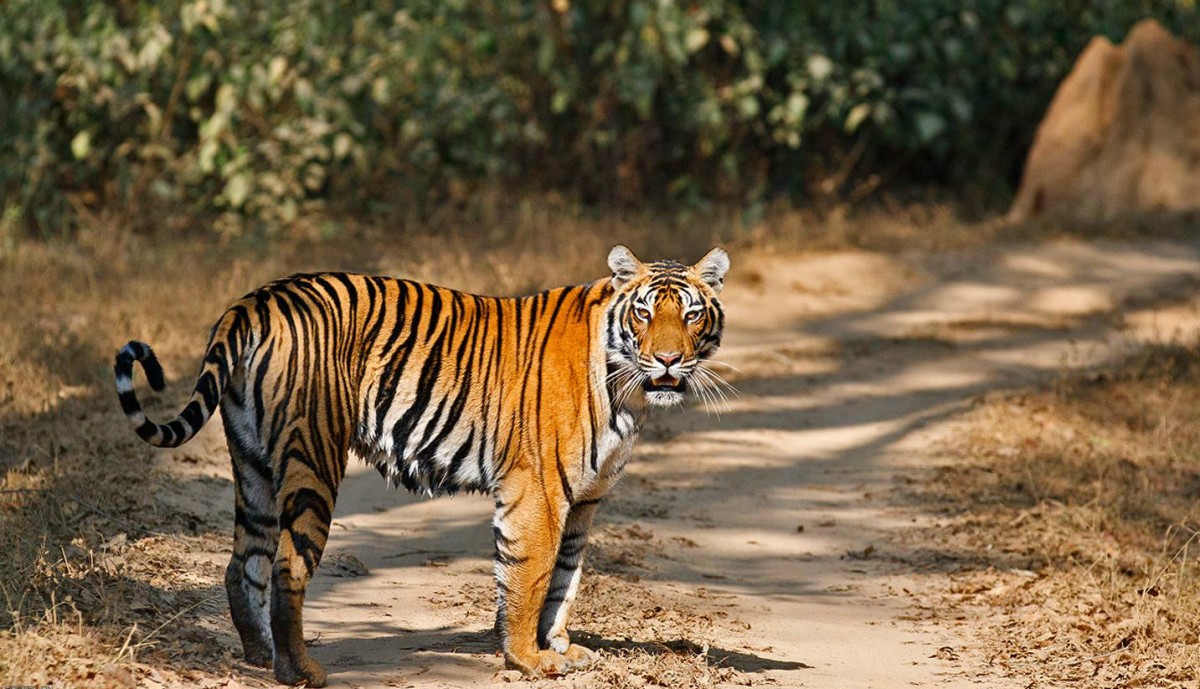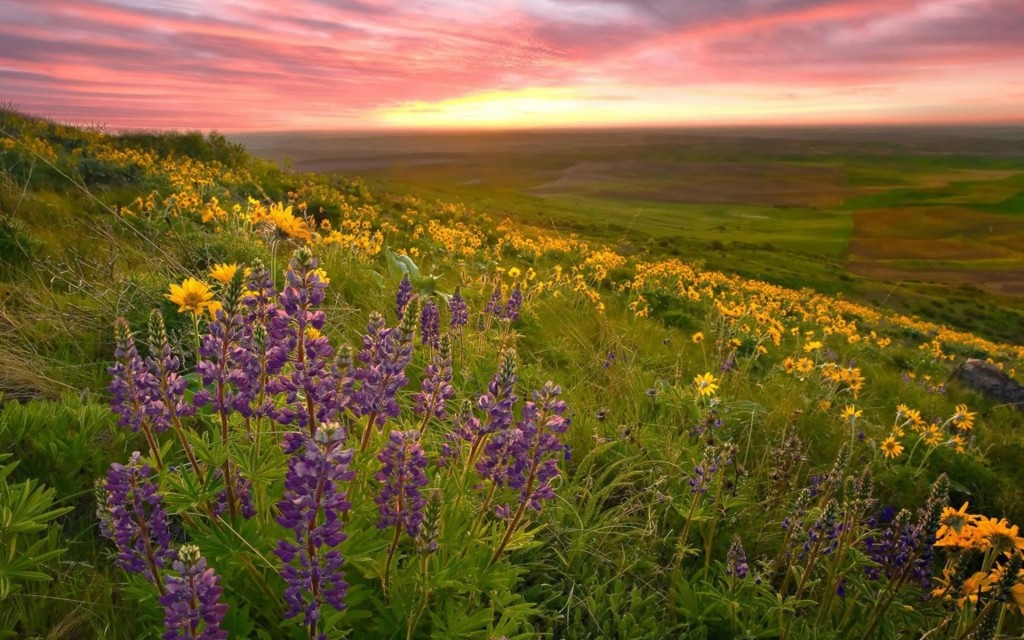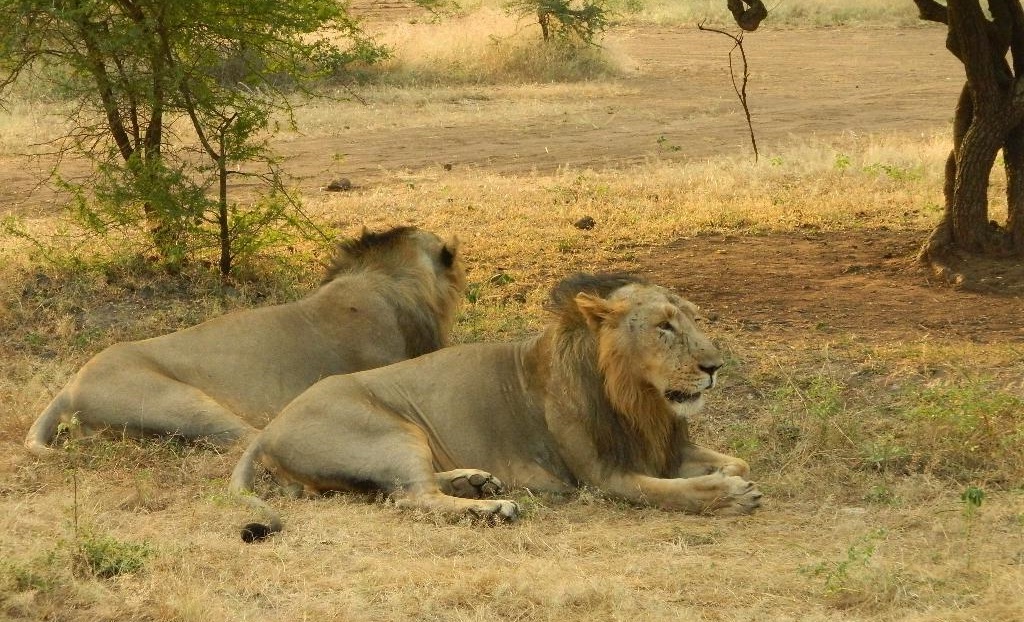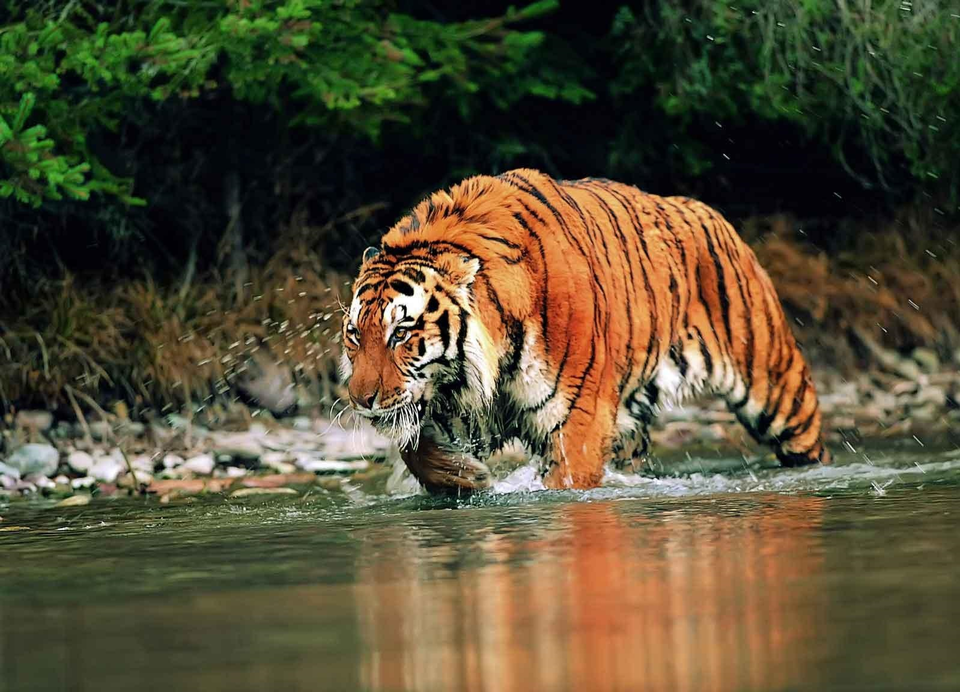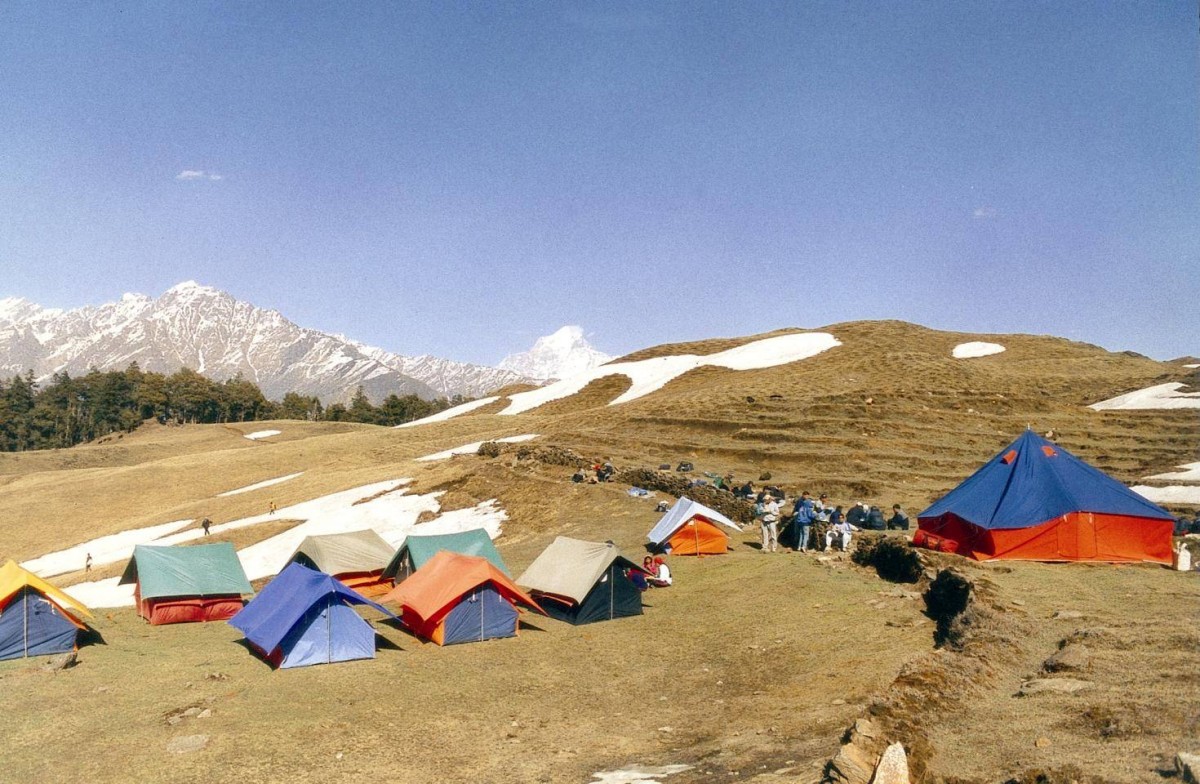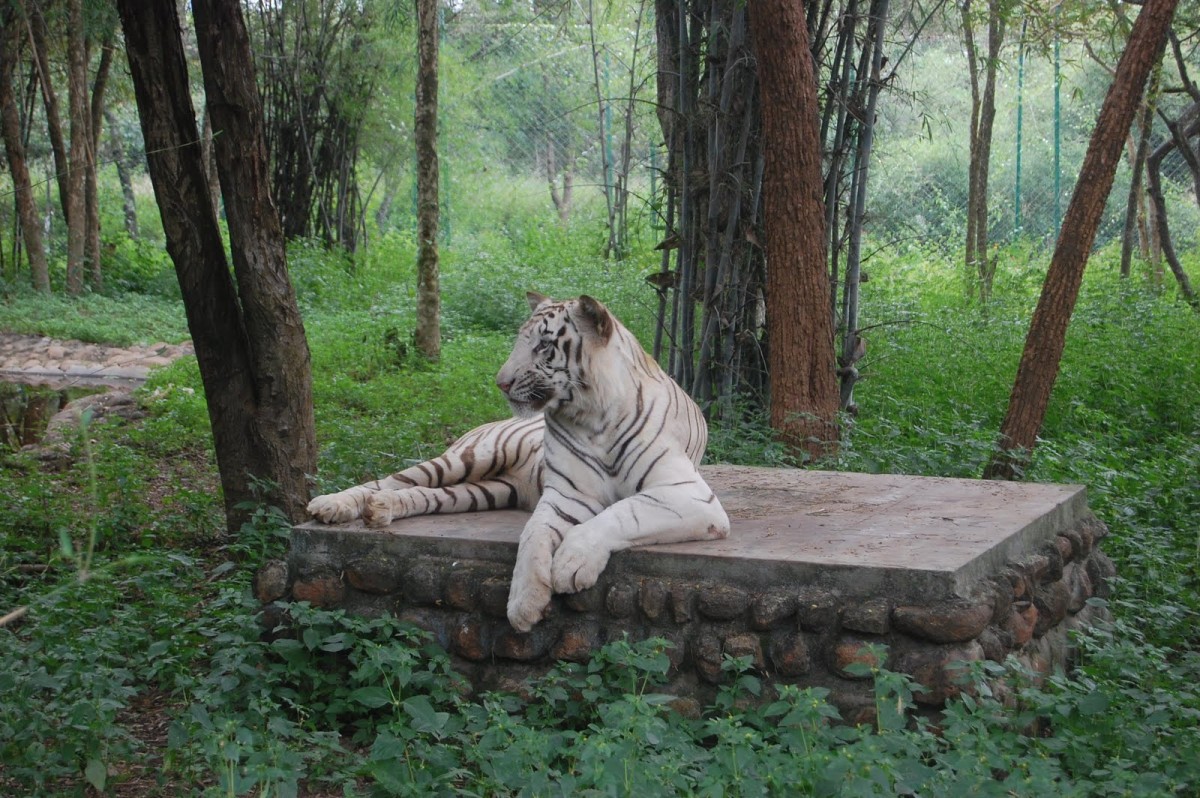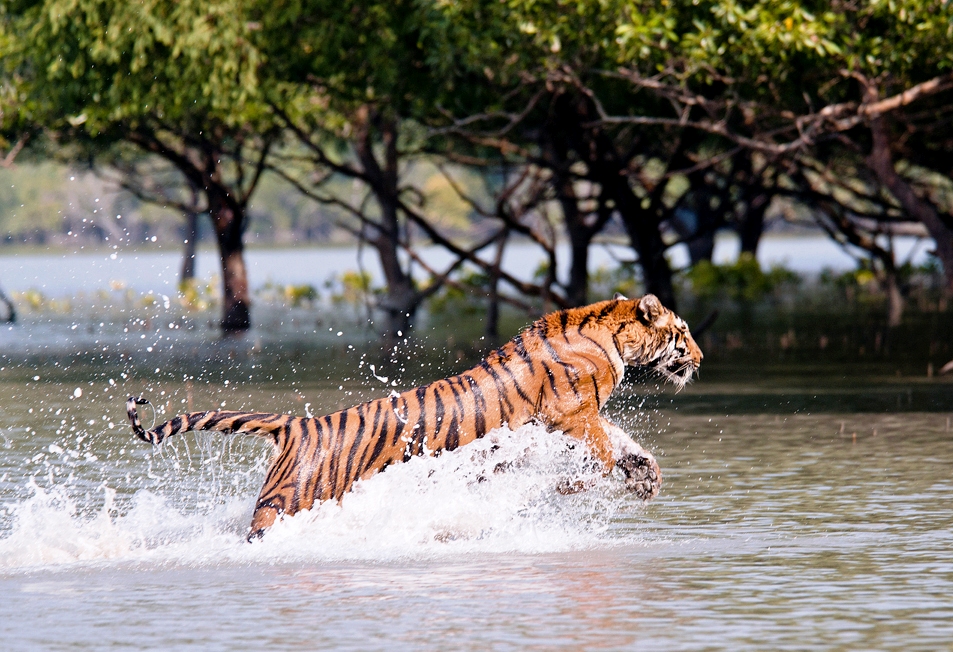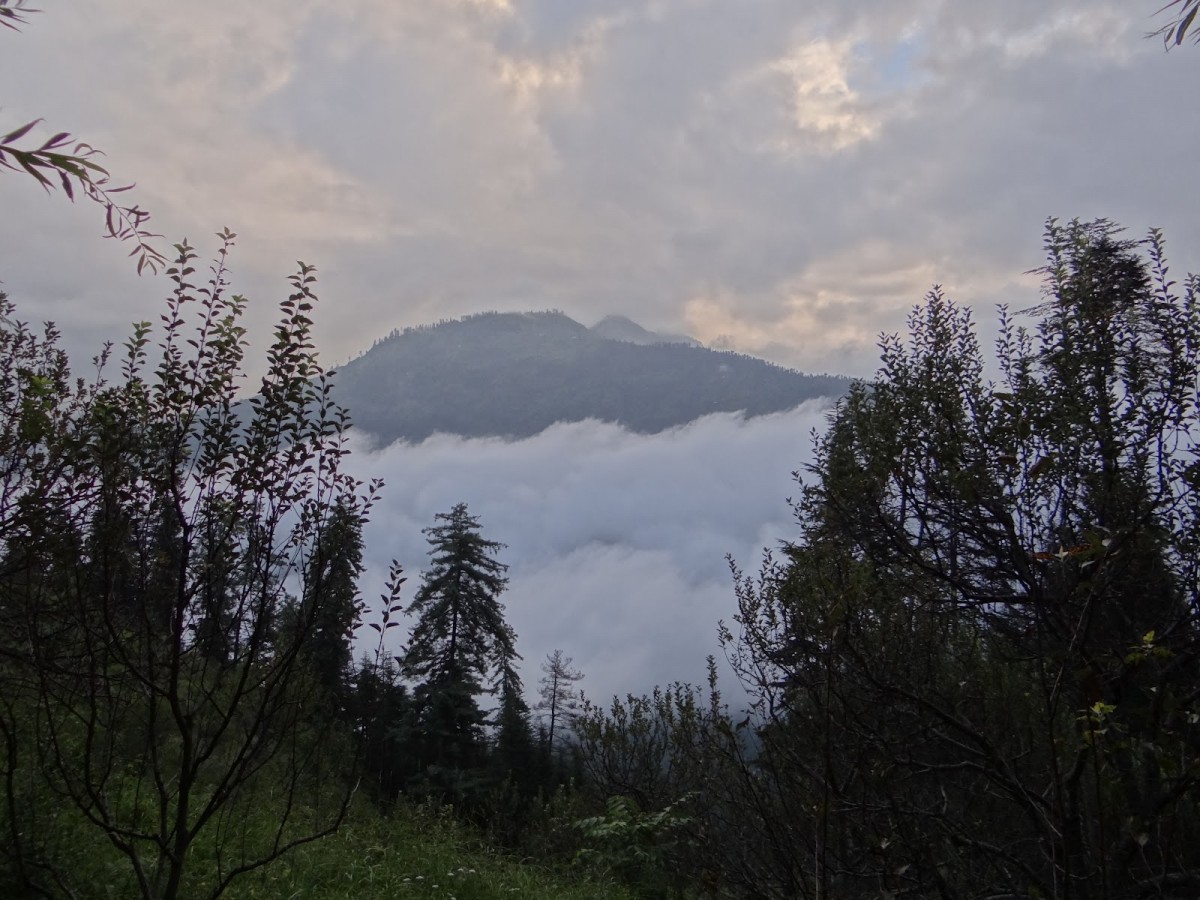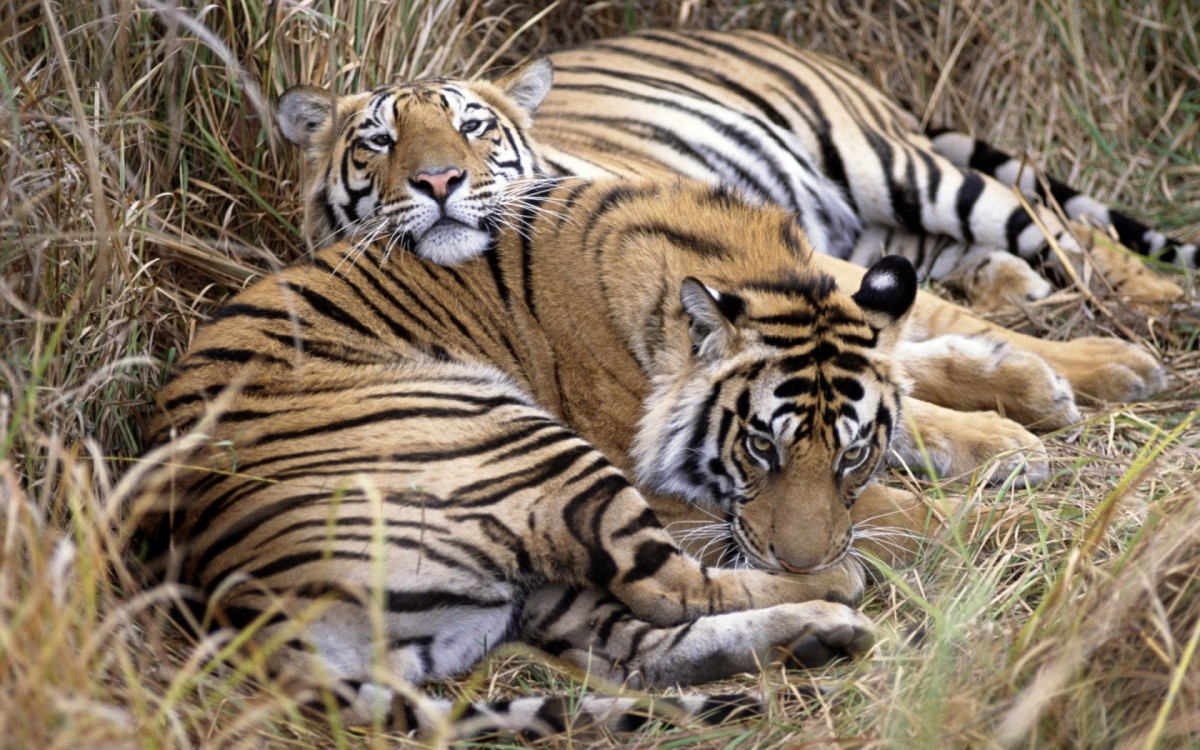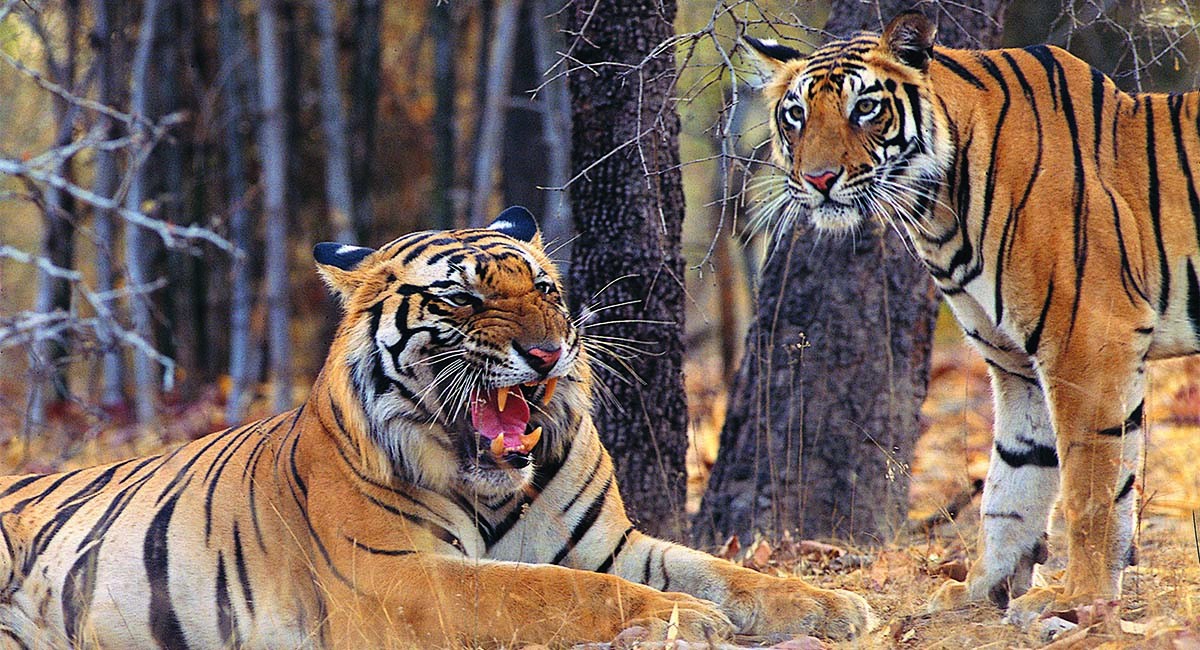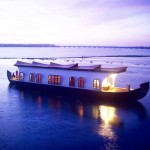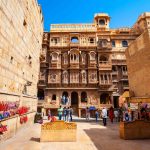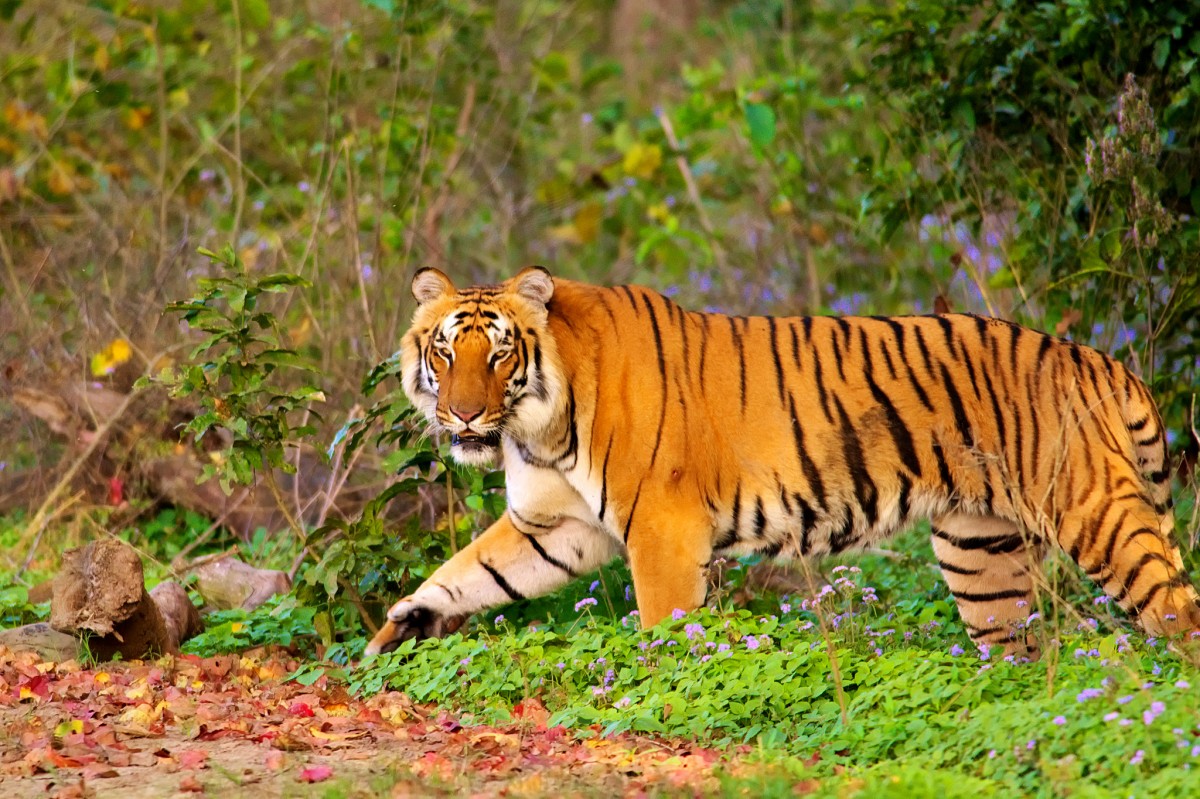
Corbett National Park
Park At A Glance
| IUCN Category | II (National Park) |
| State | Uttaranchal. |
| District | Nainital, Pauri Garhwal. |
| Area | National Park 523 sq. km. (52,082 ha) Tiger Reservel 1318.54 sq. km. |
| Core | 520.82 sq. km. |
| Buffer | 797.72 sq. km. |
| Year of Notification | 1935-36. |
| Location | In the Himalayan foothills (Bhabar tract) in Nainital & Pauri Garhwal districts of Uttranchal State. |
| Land Status | Provincial Government Biogeographical Province 4.08.04 (Indus-Ganges Monsoon Forest) |
| Special Status | Ist Tiger Reserve, Ist National park of India. |
| Topography | Shivalik foot hills. |
| Altitude | 400 Mt-1200mt. |
| Longitude | 78 degree 33’E-78 Degree 46’E. |
| Latitude | 29 degree 13’N-29 degree 35’N. |
| Rainfall | 1400mm-2800mm |
| Temperature | 0 degree C – 42 degree C |
| Monsoon | July to October |
| Winter | November to February |
| Summer | March to June |
Summer (April to June) are warm. During monsoon (July-August) the park remains closed. Winter (October to March) is the best time to pay a visit to the park with cool to moderately cold temperatures. Clothing : During the summer one can use cotton garments, but the winters can get very cold woolen to heavy woolen clothing recommended.
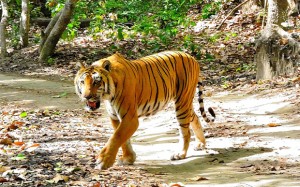
| Nearest Town | Ramnagar (19km). |
| Nearest Railway Station | Ram Nagar (19 km). |
| Nearest Air Port | Phoolbagh (Pant Nagar 51.2 km) |
| Nearest Hospital | Ramnagar |
| Nearest Dispensary | Ramnagar |
| Nearest Petrol Pump | Ramngar |
| Nearest Post & Telegraph Office | Ramngar (During season at Dhikala also) |
Best Time to Visit:
The Corbett park is open mid November to mid –June. The park is open to visitors between November and June. The best time to visit depends upon the interest of the visitor – summer is best for observing the larger mammals and winter for water birds.
Geographical Location the Corbett park lies in the foothills of the outer Himalaya within the districts of Nainital and pauri Garhwal and occupies the middle reaches of the Ram Ganga. It is bordered to the east by the Ramnagar-Ranikhet road, to the south and south-west by the Kotdware-Ramnagar forest road, to the north-west by various topographical features within the catchment area of the Ram Ganga.
Vegetation: Trees grasslands. Fauna (Animals): Indian elephant Elephas maximus leopard cat felis bengalensis tiger panthera tigris wild dog cuon alpinus hog deer cervus porcinus and Indian pangolin manis crassicaudsta spotted deer Cervus axis hog deer Indian Porcupine Hystrix Indica muntjac muntiacus muntjac sloth bear Melursus ursinus wild boar sus scrofa goral Nemorhaedus goral Mahseer Mugger, Gharial Chital, Barking Deer Turtles tortoises.

Prominent fauna: tiger leopard elephant sloth bear jungle cat fishing cat dhole yellow throated marten Himalayan palm cavit Indian grey mongoose.
Flora (Plants): Sal (Shorea robusta), Laldu (Adira cordifolia), Shisham (Dalbergia Sissoo) Khair (Acacia Catechu), Chir (Pinus roxbirghii).
Commonly seen
Mammals: Sloth bear jackal Himalayan palm civet Indian grey mongoose common otter, black napped hare, porcupine spotted deer, sambar barking deer goral wild pig langur and rhesum macaque.
Birds: Grey-leg goose barheaded goose duck great crested grebe snipe, sand piper, plover gulls & wagtails.
The Himalayan region of India has a distinguished status in housing the premier Corbett National Park lying in the foothill of outer Himalayas within the districts of Nainital & Pauri Garhwal and occupying middle reaches of river Ram Ganga covering an area of 520 sq. kilometers in 1986 and a proposed extension of 588 sq. kilometers is under consideration) the total area is 1,134, sq. kms. With a core area of 338 sq. kms. The british soldiers Major Ramsay and Major Jim Corbett were legendry hunters and naturalists the pioneer Conservationists and helped in making out its boundaries and setting it up. In the past it has remained an exclusive shooting area for erstwhile viceroys Govermor-Generals and other dignitaries. It was Sir Malcolm Hailey then governor of U.P. who set aside 257 km. for this park. Thus the year 1935 is the land mark year in the history of Wildlife Conservation in India as the act Known as united province National Parkas Act paved the way for the emergence of National Parks in India and a forest reserve near Ram Nagar (Nainital) in Uttranchal got converted into first Indian National park honouring then govermor Hailey and named as a Hiley National Park. In 1954 it was renamed on the name of river Ramganga as Ramganga National Park but in 1956-57 it got its recognition with the name of Jim Corbett a renowned hunter tuned wildlife protector who lived in the region knew the language of the jungle and who metamorphosised from hunter to ardent conservationist. One who gad written the famous book the man-Eaters of kumaon and was greatly revered by the local people for hunting down tigers that had developed a liking for human flesh. He was instrumental in setting up the reserve and eventually shot more wildlife with his camera than with is gun.
This park had another piece of luck when it becomes part of project tiger scheme (PTS) (protection & multiplication) in the year 1973 (it was chosen as the venue for inauguration of this project). According to the official census released today 472 tigers and 1,911 elephants roam in the forests of UP. The figures in 1997 (animal census in India are held every two years) were 475 and 1,984 respectively. The highest concentration of tigers is in Corbett and its buffer zone the reported number being 99. Dudhwa has 71 followed by katerniaghat with 49. Corbett also leads with 590 elephants followed by Rajaji with 445 and Haridwar forest Dibision with 310.
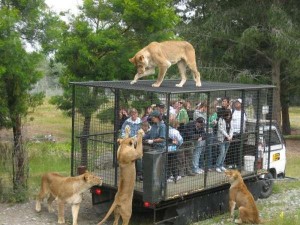
Corbett National Park once a popular hunting ground of the British covering 201 square mile was named in honour of the late Jim Corbett the legendary hunter-naturalist turned author and photographer who helped in demarcating the park’s boundaries. This park has the distinction of turning into first tiger treserve under project tiger as with the help of the world wildlife fund project tiger was launched in Corbett National park in 1973 and this park was one of the first such tiger reserves in the country.
It was established as India’s first national park on 6 August 1936 the date on which the Uttar Pradesh National parks act came into force and named Hailey National park after sir William Malcolm Hailey then Governor of Uttar Pradesh who was instrumental in its creation. Post independence its name was changed to ramganga national park in 1954 and then in 1957 to its present name Corbett national park in memory of Jim Corbett the legendary hunter and naturalist who had helped in marking out its boundaries and setting it up. With the launching of project tiger on 1 April 1973 Corbett National Park was selected as one of the nine tiger reserves and has the distinction of being chosen as the venues for the inaugu7ration of this project on 1 February 1974.
The area of the national park was increased from 32,375 ha to its present size in 1966, to enhance its integrity and to compensate for the land due to be submerged with the construction of a hydel dam at kalagarh.
There are proposals to enlarge the national park by about 12,900 ha and create a new buffer zone of about 85,000 ha through the establishment of a wildlife sanctuary, and to establish a corridor of protected areas between Corbett and the proposed Rajaji national park in the north-west.
Corbett National Park extends from the Outer Himalaya (Siwaliks) which run through its middle in an east-west direction across Patli Dun to the foothills of the Middle Himalaya. Patli Dun is an elevated valley through which flows the Ram Ganga, the only source of perennial water. This river flows westwards and widens beyond khinanauli, giving rise to islands known as sheeshum islands (sheeshum Dalbergia sissoo.) west of Dhikala, the sheehum islands give way to winding strips of alluvial grassland or ‘chauds’ providing important grazing for wildlife but with the completion of the kalagarh Dam in 1974, the island and chaud are inundated as far back as khinanauli.
It has three distinct seasons: cold (November to February) hot (March to mid-June) and rainy (mid-June to October). Mean monthly maximum temperatures range from 26oC in January to 44ccC in June and minimum temperatures from 2oC in January to 21oC in August based on data for 1980-1984. Annual rainfall varies from 1400 mm in the outer hills to 2800 mm i8n the upper hills, with 1500-1600 mm in the main Ram Ganga Valley. Although conditions are humid throughout the year, relative humidity rising up to 98%in the monsoon and seldom falling below 57% even in the driest period )(November). A wind locally known as dadu blows down the valley from about 9 p.m. to 8 a.m., lowering the night temperature. In the hot season, it is followed by a hot wind blowing up-valley from 10 a.m., to 8 p.m. During this season a thick haze of suspended dust develops which is only cleared by thunderstorms.
The park is notable for its extensive sal Shorea robusta forests which cover nearly 73% of its entirety, which exists with haldu Adina cardifolia. On higher ridges bakli anoqeissus latifolia khetwa piliostigma malabaricum gurial Bauhinia racemosa cassia fistula amla Emblica officinalis and ber Ziziphus mauritiana are common Lass common species are papri Holoptelea integrifolia, kumbhi Carya arborea and mahwa madhuca indica jamun syzygium cumini. The dalgeria sissoo Acacia catechu association along the Ram Ganga is a notable feature. Shrubs are predominated by Clerodendrum viscosum Adhatoda vasica woodfordia fruticosa while climbers are Cryptolepis buchanani phanera vahlii and Vallaris solanacea Bamboos are common in some area. Palms include phoenix acauliea. The only indigenous comifer is chir pinus roxburghii. The orchids Zeuxine sp. And Eulophia sp., and dwarf understorey shrub pygmae opremna herbacea have a scattered distribution. Lantana sq., Xanthium strumericum are among the common weeds.
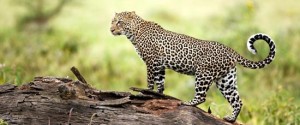
The important birds seen here are red ardvart Estrilde amandava, spotted munia Lonchura punctuta weaver bird ploceus philippinus black-throated baya P. bengalensis and common myna Acridotheres tristis cormorants phalacrocorax spp., darters Anhinga rufa, herons and egets (Ardeidae) storks (Ciconidae) fishing eagles Haliaeetus leucoryphus and lcthyophaga nana and kingfishers (Alcedinidae gulls Larus spp., moorhen Gallinula chloropus, mugger Crocodylus palustris and gharial Gavialis gangeticus.
Corbett is a haven for tigers with its plentiful prey-four kinds of deer wild boar and lesser animals. Leopards are found in the hilly areas of the park but often do not cross paths with tigers in their territories. Some nocturnal cats found here are the leopard cat jungle cat and fishing cat. Sloth bear is found in the lower regions of the park while the Himalayan black bear is seen in the higher hills only. The dole (wild dog), though rare, can be seen in the southern areas of the park along with the jackal. Some of the smaller residents of the park are Himalayan palm civet, Indian gray mongoose common otter blacknaped hare and porcupine Elephants (Solitary bulls and breeding herds) are one of the main attractions of Corbett. Slong the Ramganga River shores, one can spot the long-smouted fish-eating gharial crocodile and the mugger crocodile. Also seen on the rocky hillsides is the ghoral (goat-antelopes). The langur and rhesus monkeys are well distributed through out the park and also warn the jungle with alarm calls when they see either a tiger or leopard from tree-top perches. The sloth bear, Himalayan palm civet Indian grey mongoose, common otter, porcupine clackitaped here are the other attractions of this area.
Four species of deer are found here. These are the chital the well known spotted deer, para kakkar and the barking deer. Para kakkar and the barking deer. The goat antelopes are represented by the ghoral.
There is a lot for the bird watchers in this park. It has over 580 species of birds. Most of the water birds are migrant and arrive in winters. Some of these are the greylag, barheaded goose duck grepe snipe sandpiper, gull and wagtail. The residents include darters cormorants egrets herons the blackecked stork and the spurwinged lapwings.
Reptiles which are residents of this area are the gharial the rare fish eating long nosed crocodile and a few species of turtles and tortoises. The Indian python, viper cobra krait and king cobra also inhabit the Corbett National Park.
The avifauna is particularly interesting on account of the overlap between high altitude and plains. The park attracts a large number of migratory birds. The river is a source of attraction to many winter migrants. A number of high altitude species visit during winter and summer too sees many visitors. Being situated on a migratory route the park is also visited by quite a few passage migrants. Among the birds that have suffered heavily on account of large scale inundation are the passerines that roost and breed in smaller trees bushes and reed-beds.
The National Park offers invaluable experiences for adventurous and serious minded wildlife buffs photographers and anglers. It is advantageous to have one’s own vehicle here. Walking in some areas is permitted but only when accompanied by a guide. Elephant rides for wildlife viewing in the mornings and evenings can be booked in the Dhikala complex.
The historical patli Dun was formerly part of the princely state of Tehri Garhwal. Its forests were then cleared to make the area less vulnerable. Raja of tehri ceded part of his state to the British in return for their assistance in driving out the Gurkhas. Bokses, trbals from the terai, settled in the area and practiced shifting cultivation but they were evicted in the early 1860s under Major Ramsay.
The National park has become increasingly popular among tourists, both national and foreign. Numbers have increased from just over 5,000 in 197172 to nearly 60,000 in 2000 with the proportion of nationals progressively increasing.

The stay can be booked at various resorts in the periphery of the park e.g. infinity Resorts, Ramganga Resorts etc. Corbett contains extensive sal forests and a rich and diverse flora and fauna, including large and important populations of tiger and elephant. Moreover, it is free from human settlements.
The national park has been zoned into core and buffer areas of 32,998 ha and 19,084 ha respectively. The core zone is strictly protected for research while tourism is confined to the buffer zone. Grazing and lopping has been stopped throughout the park and is restricted to a narrow strip along the periphery where villagers have rights under the Indian forest Atc.
The Ramganga River project at kalagarh has great impact on the national park with wetland replacing largely grassland habitat over an extensive area, thus affecting fauna and flora here. The reservoir which was filled to capacity by 1979-1980 cover 4,220 ha of prime wildlife habitat. Long-term changes particularly with regard with regard to the fauna are being monitored.
Fire commonly occurring form early march till beginning of the monsoon sometime in June is a perennial problem. Establishment of a radio network and fire-fighting squads, under project tiger made the difference.
Poaching is not a great problem although in the recent past some ugly incidents took place and forest personnel had to sacrifice their life. Dynamiting and illicit netting of fish in the Ram Ganga is frequent. Water is a limiting factor in the dry season shortages sometimes causing animals to move to peripheral areas of the park where they are more at risk from hunting. Artificial waterholes of various localities throughout the park.
The varied topography comprises hilly and riverine areas, temporary marshy depressions, plateaus and ravines. The lower areas are almost completely populated by sal trees. In the park re found 110 tree species 50 mammals species and 25 reptile species.
The national park is noted for its rich and diverse fauna, with 50 species of mammals 600 of birds 33 of reptiles seven of fish and 37 of dragonflies.
Corbett park saw progressive growth of tiger under the proect tiger scheme with a 50% plus increase in the population in 1 st 20 years of the PTS; thus have highest density of tigers, which touched the 90 figure in 1981, few of them turned man eater, but wildlife authorities could control it.
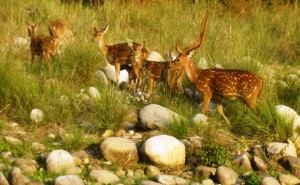
The Dhikala Complex is the most sought after place to stay at herds of chitals are seen from the complex itself which attracts park visitors enormously. The park inhabits number of species of birds flocks of bulbuls jungle fowl doves king fishers flycatchers fish monitor lizards barking deer wild pigs & Chitals attract wildlife fans to visit the park. Elephant rides arranged by park authorities with highly professional mahouts is an asset to the park as encounter with the wildlife become easy. The Ramganga River passing through the park is an additional attraction for the visitor at the Park. The park can also be accessed through private car for which permission and sevices of a forest guard is required from park authorities. It is a proven fact that a motor vehicle causes less disturbance to the wildlife than man on foot.
The park complex is divided into chauds, like Kinanauli paterpani Mohanpani Bijarani etc. Dhikala is the mojor one with wide area and thick grass which is a favourite grazing ground for the elephants. Elephants droppings help in locating the wild elephants. Elephants are bron in summer they are not as big in size as their cousin in Africa and they normally consume 250 to 300 Kg of green fodder a day. They are normally seen in groups, with the young ones and the elders. In general elephant tusks are common in males hence the name tuskers. The male tusks are longer than the female (tushes) although tusks are not there in the female elephants. Single tusk elephant are often called Ganesha’. An old and experienced female normally leads the elephant herd, the strong tusker holds the mastership. Climatically Corbett is known for its three seasons 1. summer (March to June), Monsoons (July to October) and Winter (November to February) when temperature varies tremendously as it remains between 5 o-25 oC in winter while in summer it varies 44o-41oC. Rainy season has very heavy rains (1400mm-2800mm). Conditions are humid throughout the year, relative humidity goes up to 98%(monsoon) and even 57% (November). The night temperature goes very low with winds blowing between 9 pm-8 am while in summer hot wind blows between 10am -8 pm. Nearly 500 plant species are reported here.
The Kalagarh dam on Ramganga is a tribute to the park as it is a boon to the park particularly the 80 square kilometer lake, an evening joint for the park wildlife. The bird population is reported to be around 600 comprising both migratory as well as sedentary birds exclusively mention may be made of ducks goose, sandpiper plover wagtail gull (migratory water bird) egrets herons. Black necked storks, cormorants (Residents), crested serpent eagle, fishing eagle spotted eagle harrier cuckoos, parakeets, woodpecker kalij pheasants chir pheasants red jungle jowl Himalayan long billed otters night jars, owls owlets etc. During 15 November- 15 June the Corbett park is open for the visitors. April-June are best for photography. The ideal place to stay are well located forest Rest Houses which can be reserved through prior communication with concerned authorities.
The park which has just celebrated its diamond Jubilee has become increasingly popular among tourists with manifold increase in number of visitors from India and abroad. It provides accommodation at Dhikala and other places as forest rest houses caravans and tents. The park information center and project tiger office are located at Tam Nagar. A museum in the homour of Jim Corbett is established in his former home at Klaldhungi (32 Km from Ramnagar)
Accommodation
There are many accommodation facilities at Ramnagar as well as at the Corbett National Park. Being one of the most frequently visited parks in the country the forest department and other agencies have their hotels lodges rest houses log huts for the visitors.
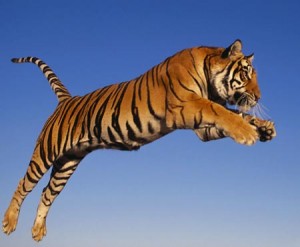
Forest rest houses log huts etc at Dhikala forest rest houses at sarapduli bijrani ghairal offer some of the best stay in the region. There are many resorts along the periphery of the park which take the load off the governments accommodation facilities. To stay at the government hotels rest houses atc make sure that reservations are dome well in advance as the pressure is really high during the tourist seasons. Adjoining the forest reserve-Quality inn tiger tops forest rest houses tented camps and tourist huts. The budgeted traveler can find a host of comfortable rest places in and around the reserve most of which are equipped with modern facilities.
Arrival Corbett:
The nearest major airport is the Delhi airport however with limited services are available at Pantnagar airport the nearest airport to the Corbett park. The nearest railhead is at Ramnagar. It is 51 kms from Dhikala. Entry to the forest is just outside Ramnagar. Ramnagar is on the Moradabad-Ramanagar branch line of North Eastern. Railway. One has to take the road from Ramnagar to access the park.
It is 65 km in southwest of Nainital the famous hill station. Ramnagar is an obligatory point for going to the park. Here besides regular bus services govt. mini buses are also available. Ramnagar the main administrative centre for Corbett National Park & Tiger Reserve is very well connected by bus service from National Haldwani and Ranikhet (100 km north). DTC buses are available from Delhi faster trains are available from Delhi. Limited train Service is available from Delhi, faster trains ate available up to Moradabad only. There are various gatesto enter Corbett the closest is at 1 km from central Ramnagar is on the road to dijrani camp however the famous and most commonly used one is the Dhangarhi Gate, 18 km along the highway north to Ranikhet providing accass to northern & northwestern portion of the park along the Ramganga river valley and the famous Dhikala Camp. The movement within the park is most convenient with jeeps (available on hire at Rmnagar from various operators at the bus stand like KMVN Tourist Lodge & Bharat Hotel). The bus service is available between Ramnagar and Dhikala, stopping at different forest rest houses en-route. One can also avail of conducted tour buses coming to Corbett in route. Corbett is a serious park where the rules of conservation are to be strictly followed by visitor park employee and the Kumaoni villagers who live just outside the park. And this is made easy because it is a park loved by all who visit.
The topography of the park is varied and interesting with ravines, plateaus, marshy depressions and grasslands. The sparkling river Ramganga is the life source of the park. The vegetation is dense mixed deciduous with a wide variety of trees including the stately sal and creepers shruds bamboos and grasses.
The Ramganga Irrigation Project at Kalaghar has raised many eyebrows as it is debated that it imposes problems for the park and a review is inevitable so that the land and the buildings come back to project tiger with a reduction of staff employed since at the moment 8,000 people are working here. Already an area of 26,800 ha. Comprising the reservoir is lost as well as the dam site of 11,500 ha. A recent court judgement has given some relief to the conservationists. Similarly on the south western boundary there is considerable biotic pressure on the reserve due to grazing and the collection of M.F.P. thus Corbett has faced has already faced challenge from modern days development.
The Buffer zone management needs special attention as so far the efforts have remained core-centric as the core is much better protected and managed.
the leasing practice of forest areas to individuals must be stopped.
Budgets must be adequate and the same should be released on time
The available strength of manpower is not adequate no training programmes are available and the welfare of the personnel must be a vital activity.
Forest personnel must be given judicial powers and protection equipments.
The important grey area is hashish gathering from the Canabis plant which is found in abundance here. Further steps are required being taken to reduce this menace.
Although not that alarming yet in 1990 a poaching gang was caught in the core area with two leopard skins, advance strategy to combat poaching is essential. A serious threat by ivory poachers exists on the western side of the reserve and over the years a large amount of tuskers have been shot and their tusks removed. Complacency towards poaching must end, as it can be a direct threat to species survival. There have been a number of incidents where extremists have on the southern periphery used forest rest houses after threatening the staff. It is also reported that under their protection the local mafia involved in the felling of trees have a free hand in Terai west division. Officers and staff of the park have received threats. Recent developments like unauthorized helicopter flights have added another burden not only to park management in Corbett but to wildlife management in India. All level efforts and directives in this regard are essential.

Corbett Park caught in a weedy bind Like Corbett fauna its flora is reported to be in danger as foreign flora is suspected to be taking over Corbett tiger reserve. An Uttar Pradesh Forest Department (UPFD) report with support of Delhi-based botanists has revealed that some 50 exotic species of weeds have cast a noxious net over the 1318.54 sq. km park area. The limited circulation list is topped by lantana (Verbenacae) followed by parthenium (compositae). They regenerate under any conditions, spread fast to destroy indigenous plants and are usually avoided by herbivores.
The local bullying species are headed by Rohini (Malotus Phillipensis), which dominates the middle rung of the three-tier green canopy in CTR. Rohini now covers more than a desired 25 per cent area destroying sal seedlings in the process. As a result the upper strata of the forest cover is being stifled.
The biggest problem in the core area is infestation by weeds, notable Lantana and Canabis. Trained elephants are being used to remove the former pulling plants out by the root stock. Being an annual eradication of cannabis is more easily achieved by repeated cutting prior to Flowering.

